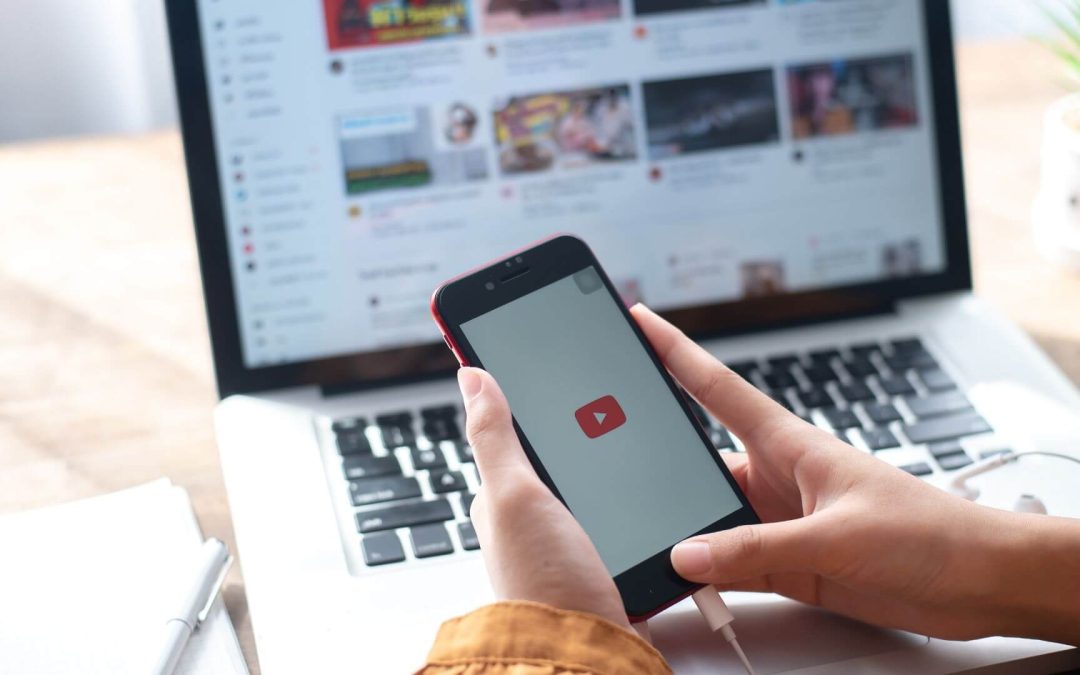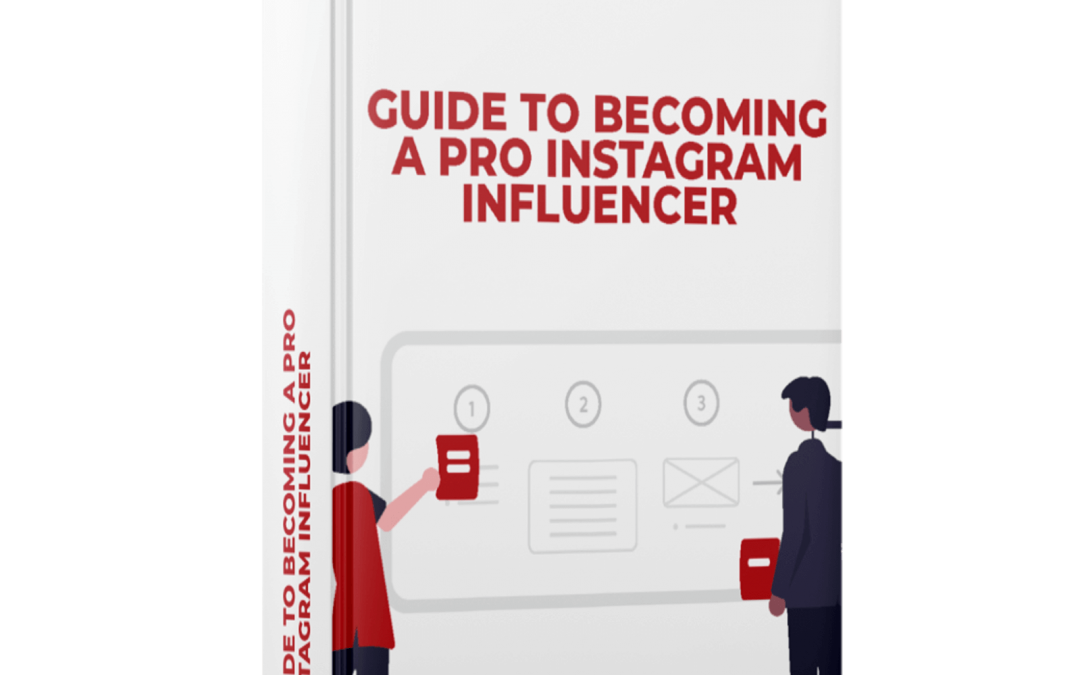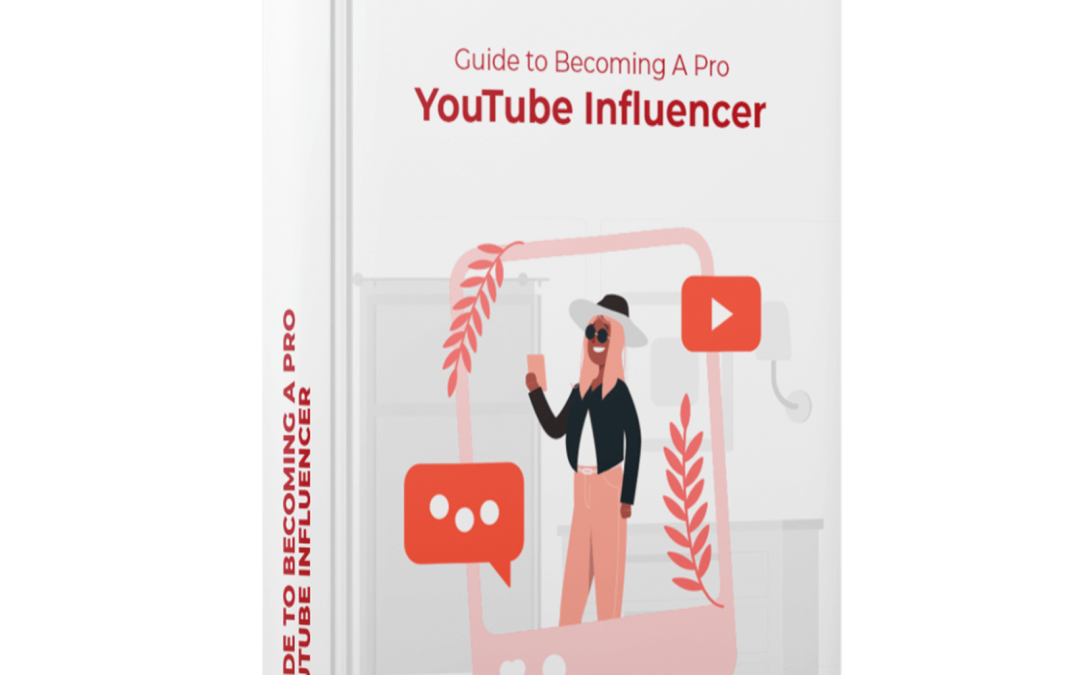Social media plays an integral role in today’s digital world, providing endless opportunities for content creators and marketers. And with different channels, content types and audiences, content is a key part of the marketing process and success.
Traditional social media platforms have played a key role in the rise of influencer marketing, and YouTube has subsequently emerged as a huge opportunity for influencers to market themselves through video content. In terms of a video platform, YouTube is by far the largest.
Looking at just the most basic numbers – YouTube has 1 billion users. These 1 billion consume over 4 billion videos a day. More than 500 hours of content is uploaded every minute. YouTube is often overlooked by marketers as it is considered to be a video platform rather than a social media platform. However, with the organic user base and the rise of video content, YouTube is an undeniable force when it comes to marketing and consumption.
As users continue to consume video content, YouTube has slowly become the second largest search engine in the world after Google. With niche audience bases, quicker connectivity and increased investments, YouTube is home to a number of influencers who connect with their audiences directly through long form video content.
With an increase in the number of influencers on the internet, there are several barriers of entry while becoming a YouTube influencer. Through this blog, we take you through the steps to build a successful YouTube channel that gains views, likes and subscribers, ultimately raising your stock on the platform.
Traditional Video Marketing Has Gone Online
When we think of video ads, our mind automatically goes to large scale television spots where brands would intersperse their messaging in commercial breaks. YouTube has flipped this on its head. At the very outset, the game remains the same but the playground has shifted from television to online.
The key difference? The freedom for audiences to choose to watch a video, as opposed to being at the mercy of the television. YouTube is the middle-ground between traditional commercials and social media posts.
By packaging videos for the internet, you’re checking all the boxes of effective advertising – visual appeal, emotional connect, storytelling etc. Depending on your needs, the internet lets you deliver your message in either 15 seconds or 15 minutes. That level of freedom is not something brands had access to in the past.
Video marketing allows brands to educate the users, form a connection with them, build loyalty and forge a long-term relationship. The connection a video makes with a user lasts even after the video is uploaded. Great insights have a much better chance of catching the eye when presented through a video as compared to text or image-based marketing.
Having said that, not all videos on the internet are effective. Many brands choose the quantity over quality mindset, thereby failing to establish an effective connection with the audience.
Quality videos shine through the clutter and draw users in. Between age groups, genders and geographies, the Internet allows you to target specific demographics with videos rather than casting a wide net and hoping it sticks. The ability to track and geo tag makes it even more effective than traditional video marketing.
In 2021, large portions of the population have pulled the plug on their cable services. While televisions are still popular, the content is often streamed straight off the Internet, thereby making TV ads obsolete among large sections of the audience. Brands are increasingly reallocating their budgets from TV to online.
The 18-49 age group is becoming less engaged with television and has much more of an emotional investment online. While traditional video advertising delivery will continue to stick around, there is no denying that brands and audiences spend more time on the internet.
Brands invest more resources in the medium and audiences invest more time. It is a matter of time until YouTube makes old-school advertising obsolete with every brand in the world finding their audiences online, making the internet the biggest singular marketplace for brands to form the connection they desire with the audience they desire.

Brands Need YouTube
Having established the need for advertising through video on the internet, let us look at where most of this advertising happens. When it comes to motion content consumption, it is impossible to look beyond YouTube.
While many brands haven’t yet explored it as a marketing option, the most established brands have millions of views and engagements on their YouTube channels. Through storytelling and education, brands have been able to establish a deeper connection with audiences. With many choosing multichannel strategies, YouTube is home to their long-form content before it is sliced and diced for other platforms online.
With no restrictions on time, content or language, YouTube is where brands maximize their content while creating a consistent visual language. YouTube allows brands to share unfiltered, untrimmed and uncropped content narrative of their brand’s messaging through a video. This allows them to share their messaging, mission and values without any compromises.
Another aspect that makes marketing content on YouTube imperative is the ability to demonstrate a product in action. While a cosmetic ad on TV might quickly run through the ingredients and benefits, YouTube allows users to gain a much deeper connection through tutorials and how-to videos. Which of the 2 methods would excite brands more?
Brands across industries are creating an array of videos to draw the consumer in and tap into their eagerness to engage. ‘Behind the scenes’ content on YouTube helps users feel like they’re a part of the brand family. With unrestricted access to brands and celebrities, this minimal effort tactic garners way more attention than traditional video ads.
Coming to the most crucial aspect that separates YouTube from the rest of the clutter – YouTube influencers. While other social media platforms gained quick success, it is imperative to note that Youtubers were the world’s first influencers. Bloggers and vloggers who jumped on the YouTube bandwagon early have now amassed millions of followers. These influencers are on par with A-list celebrities when it comes to following and the ability to drive purchase decisions.
Brands love using these influencers to market them to their respective fan bases. Brands pick influencers who align with their brand values and use their star power to communicate with their cult followings. These influencers have the ability to think outside the box and use content formats previously unseen on traditional platforms. From fireside chats, interior design, clothing hauls, and time-travelling through trends, the possibilities are endless! In the ideal marketing scenario, brands know where their customers are.
By tracking trends, it is possible to know where the audience is spending time online and YouTube plays a key role in this journey. With multi-channel strategies revolving around YouTube, the ability to garner eyeballs and cause tangible engagement is far more on YouTube than any other media platform ever.

Rise Of YouTube Influencers & Influencer Marketing
The core essence of influencer marketing is that social media stars grow into subject matter experts with an ever-growing follower base. These stars have built a personalized and deep bond with their fans to a point where they can influence their purchase and lifestyle decisions. The same principle that drives big brands to sign celebrities as their ambassadors applies here, however YouTube influencers have way more influence over their cult followers. People soon look towards these influencers to give them informed opinions. The sheer draw of YouTube videos over other social media platforms is the length.
Influencers have all the time in the world to demonstrate products and explain the benefits on YouTube in an engaging manner. Sure, users might see brief glimpses of a brand on Instagram or hear about it on a podcast. However, the entire end-to-end video experience of a product is only possible through YouTube.
YouTube has a formal advertising marketplace set up. This means that brands can build multiple campaigns using it.Influencer marketing might work for all demographics but really resonates with Millennials and Gen Z youngsters who watch YouTube more than any other video medium or platform.
While most social media channels have a feed with posts from friends, family and anyone else of interest, YouTube works like an internet-fuelled television. The main difference being users choose what they want to subscribe to and watch rather than being shown pre-programmed content. While brands still need to invest in production costs for their videos, there is no money paid to YouTube to telecast their videos like a TV network.
The one thing that makes YouTube similar to other social media channels is that audiences expect authenticity. If that means they need to get through some product-based content, so be it. The authenticity displayed on YouTube is so genuine that it drives the intent to purchase up by 5.2 times. A part of this is attributed to the fact that influencers seem more accessible unlike glossy and unreachable celebrities.
Sometimes, smaller influencers have way more impact than a large celebrity as they are way more in-tune with their audience and their behavior. The ability of these influencers to tell stories is unparalleled.
Audiences are invested in their life and feel like they’re one of them. This personal connection is what brings even the biggest brands in the world to adopt influencer marketing and capitalize on the symbiotic relationship between users and YouTube influencers.
Vlogging, for example, is an extremely powerful tool that outperforms traditional mediums through emotive elements that appeal to and inspire consumers. Influencer marketing is here to stay for businesses and brands of all sizes.

Independent Voices For Niche Markets
Depending on the context, ‘niche’ has several meanings. In marketing, it refers to a specified segment for a particular product or service. When brands use niche influencer marketing, they usually partner with influencers who have established a similar set of values with their online presence.
The niche can be based on price point, quality, demographics, geographic location or interests. Unlike massive celebrities, niche influencers usually focus on just a few subject areas.
For example, an influencer might be an expert in pet care or DIY furniture projects. This level of specificity is hard to match with big celebrities. What these niche influencers lack in followers, they make up for through their engagement and specialization. It is observable that engagement rates are, more often than not, inversely proportional to one’s follower count.
Brands that work with niche influencers tend to see better engagement results than campaigns with less specialized influencers who have bigger followings. Another reason that brands choose niche influencers is affordability. Some famous internet celebrities have brands shelling out thousands of dollars purely based on their follower count.
A niche influencer charges a lot less per post but guarantees efficiency in terms of product-following alignment as compared to the more generalized ‘macro’ or ‘celebrity’ influencers. Such marketing plans require a high level of planning. It is imperative to start with a detailed strategy for the influencer campaign that drives engagement with your niche audience to achieve the necessary business goals.
Niche influencers can be found on social media platforms based on keywords, or at influencer marketplaces. This influencer then collaborates with the brand to craft the specific content that conveys the brand’s values to the audience with authenticity. Most competent brands and influencers individually track their progress. This ensures that the influencer can course-correct based on contemporary trends to guarantee the best chance at succeeding.
The entire influencer marketing game revolves around likes, shares and comments, and hence that determines the overall reach of the campaign. Based on whether the goals have been met or not, the data and stats provide a roadmap for how to proceed.
The sheer scale of the internet and diversity of users has ensured that brands cannot use a one-size-fits-all approach for their marketing campaigns. There is a burning need for internet personalities who are a blend of YouTube influencers and topical specialists to truly tap into niche markets and connect with users, prompting them to become loyal customers of the brand.

Evolution Of Content For Marketing
Whether it’s online, offline, above the line or below the line, the heartbeat of any marketing communication is always the content. From the days of radio and print ads to contemporary influencer marketing, the delivery mechanism of content is the only thing that has evolved.
The modern Youtuber needs to be the whole package to create a channel that stands out from the crowd. Dull and uninspiring channels drive away customers faster than anything else. The visuals when users first visit a channel determine their immediate action. The best influencers pay attention to detail to perfect even the tiniest of aspects including channel art, cover and banner image, unique templates, thumbnails, and music. The most sought after influencers also plan.
Before shooting each video, they are usually aware of what their content will look like for the next 1 week, 1 month and 1 year. While these will obviously change, the overall planning is always long-term. This gives them direction for their content and helps them stay on course.
Trying and failing is often a precursor to succeeding. Influencers often try a few alternate videos to promote a cause/brand. The one that works the best gets translated into a series for the best possible engagement. The crowded marketplace also makes competition a huge factor when planning content.
Looking at competition allows influencers to understand what others in the niche are doing to engage with audiences while also giving these influencers an idea of what to avoid for a completely unique take on the topic.
Another secret weapon in the arsenal of most successful influencers is practicing good SEO. Not everyone uses it. Influencers who believe they understand the market always find the path of least resistance to the user. By using keywords that match the search queries of consumers, it is way easier to find these influencers while trying to solve a pain point. By optimizing the channel, videos and playlists accurately, these influencers are more easily found on YouTube.
The influencers who sustain viewership on their channels are the ones who also post most consistently. A dip or spike in views doesn’t impact the overall posting schedule for niche influencers. An updated channel is the most relevant.
A posting schedule keeps your content fresh, timely and most importantly, engaging. Along with knowing what content works the best based on analytics and data, one can also identify when their content has the best chance of succeeding. This helps influencers optimize their posting schedule as well as builds excitement among fans for upcoming videos on the YouTube channel.

Producing Videos For YouTube
Quality comes first. Today, YouTube has replaced the role played by TVs and cinemas. YouTube is far from saturated but the production quality of many videos is truly exceptional. The successful content creators have quickly realized that users don’t watch low-quality videos. Quality here refers to the level of production excellence and execution.
Some of the easiest ways to achieve clean, crisp videos is to use a black background or show graphics on a white screen with a narration voiceover. Investing in quality equipment is extremely important and worth it. The days of YouTubers getting away with grainy, poorly shot footage are gone.
Creators who are serious about their craft have to up their production game. The best videos are shot with a good camera. These include GoPros, Canon, Sony, Olympus or Panasonic. Some phone cameras with 4k capabilities should suffice, but nothing comes close to a professional vlogging camera. The minimum quality that is acceptable for a top channel is 1080p/HD should 4k not be possible. The choice of equipment is also a function of the style of shooting.
For shorter videos on the go, a compact camera with image stabilization would work great but for longer high production shoots, a DSLR or Single lens would be necessary. The single lens cameras are lighter, more efficient and something that most top Youtubers use. This being said, equipment is not all that is needed to create engaging YouTube content.
Every top Youtuber uses online or offline editing tools to make their videos appear great. This gives content creators the opportunity to reach the needed creative potential. Editing creative videos out of clips shot is a necessary skill for all Youtubers. Good editing helps the video flow smoothly from one point to the next, keeping viewers actively engaged.
The main factors that determine the cost of making videos include the video type, duration, pre production, crew, time, travel expenses and equipment. With video, you get what you pay for. If you want a commercial style video and are only willing to put up 1000$ for it, it isn’t going to happen.
We recommend that creators begin with a video production brief that helps outline their goals for YouTube. It helps influencers and content creators stay true to their goals and budget. One way to save money is to collaborate with other freelancers to supplement a skill you lack. If factors like script, locations and editing can be managed in-house, it helps drop costs drastically as compared to partnering with a full-fledged production company.

YouTube Analytics Is Your New Best Friend!
With the sheer volume of users on YouTube, it is theoretically possible for creators to reach an audience as large as Netflix does through YouTube Analytics. The native analytics tool on the site provides artists with access to various metrics about their videos performance.
These metrics include the time viewed, target demographics, traffic, impressions and more. This data is crucial as it helps creators understand who their content is reaching out to, and how they are responding to it. Even for those who hate scrolling through data, YouTube Analytics is pretty straightforward. It allows users to focus on the data that matters the most to them rather than overwhelming them with a ton of data.
Knowing how a video has performed plays a key role in understanding whether efforts are paying off. The more users know the better content they can create.
This data is usually available in the YouTube Studio. The ‘Analytics’ button on the dashboard presents an overview of all the data. The 4 main elements of data are Reach, Engagement, Audience and Revenue.
Whether creators seek in-depth analytics over a certain video or want to compare two videos performed against each other, all the desired data is readily available and accessible. While it is easy to lose oneself in this sea of data, it is important to note that the metrics required should be based on specific questions.
The key questions are how viewers engage with videos, when they exit videos, which videos convert the most to subscribers and whether your target audience matches the buyer persona. The best possible outcome of putting out content is to have a high ‘watch time’. This refers to how long users wait before exiting a video and is a direct measure of engagement.
YouTube uses this metric in its algorithm to understand the quality of the content being put out. As watch time improves, the more chances that YouTube recommends the video to users. YouTube Analytics also presents data on your sources.
This refers to where users find a video. Be it YouTube Search, Suggested Videos, Channels, Direct Visits or External Sources, these categories help content creators demarcate where their users find them. Based on these results, the creators can easily craft strategies to use the necessary marketing channels and keywords for optimum engagement with their videos.
A common example, fewer views from direct YouTube Search could call for an SEO revamp. If there are fewer views from Suggested Videos, it suggests that audiences aren’t engaging enough with the video. On the contrary, a higher engagement rate tells YouTube that the page is valuable.
YouTube Analytics is necessary to run any successful campaign on a YouTube channel. There is evidence to discover audiences, what is working, and areas of improvement, without being overwhelmed by numbers, through YouTube Analytics.

YouTube Social Media Promotions
With 1.8 million daily active users, YouTube probably already has an audience for every content creator who just doesn’t know about them. Sometimes creators overlap their own content by uploading similar videos within a short timeframe. In order to get the most out of older content, it is imperative that influencers and content creators cross promote their videos. It helps to add links of a video in the description, to encourage viewers to check it out as a call-to-action.
It is important to remember that YouTube is a social media website and there is no harm in being social on it. Cross-promotion on other social media platforms like Facebook, Instagram and Twitter goes a long way with their massive user bases. If the content might resonate with an audience slightly more entrenched in a corporate space, LinkedIn might work as well. As discussed earlier, content on the internet is a replacement for television and cinemas for a vast portion of the population.
Just like blockbuster movies have a teaser and trailer to build excitement, YouTube videos can as well. These are shorter clips from the full video that give away just enough information to entice the audience into waiting for it and building excitement.
Another tool that every creator probably needs to know about is the Facebook Native Video Uploader. This allows them to upload their videos to Facebook with a CTA that links viewers to the YouTube channel. The CTA also invites users to subscribe to the channel for increased engagement.
Most content creators also have a website of their own and it is important that the links to all their YouTube videos be present on their website. A simple way to achieve this is through a social media aggregator that will give viewers a complete picture of one’s social media presence and drive more engagement and traffic to it. These aggregators pull content like videos, images and hashtags from all platforms like Instagram, YouTube and Twitter into one beautiful feel that gets embedded onto a website.
A key aspect of being a YouTuber is to be aware of all of YouTube’s community guidelines and respecting them. In an effort to promote a video, it is detrimental and counter-productive to actually lose content as it doesn’t adhere to the YouTube guidelines. These rules have been put in place to deal with the large number of underage users on the platform.
In short, every creator should ask themselves “is this something I’d want my little brother/sister to watch?” to get an answer. The issue with violating the guidelines is the video will get flagged by platform and removed from YouTube’s recommendation feature. The guidelines are in the public domain and can be double-checked at any time.

Boosting Engagement With Fans
While YouTube is all about finding a niche, the broader perspective is of it being a community-based platform where the larger community dips into niche creators to build a following. One noticeable trend is influencers and creators following others who run similar channels to them.
This, again, builds into the whole community rapport aspect of YouTube. Following like-minded YouTubers is recommended and one should watch, like and subscribe to these channels to build a sense of solidarity and the scope to benefit off each other’s content. Apart from reaching new viewers, this allows creators to be aware of the content being created on YouTube. Like all platforms, the comments section is unlikely to be a bed of roses.
One must take cognizance of the fact that fan engagement is likely to be a combination of the good, the bad and the ugly, just like most avenues of communication. Comments are definitely the best way to interact with fans and boost engagement. When a YouTuber interacts with a fan and engages with them in a dialogue, it makes them feel valued and welcome. The more connected a viewer feels to a set of content, the more likely they are to share it and continue following the channel.
For users with a large following, it could be impossible to respond to thousands of comments. However, even putting the time and effort into responding to 25% of the comments shows fans that an attempt is being made to engage and create a human connection. Not to forget, fans’ comments are a great way to gain feedback on content.
By crowd sourcing information about suggestions or areas of improvement, fans feel like they are a part of the creative process. As expected, not all feedback is positive. While it is human nature to ignore the negativity, one strategy is to interact with the negative feedback and promise to make an effort to improve. It might sound clichéd but ‘to kill with kindness’ is still a potent strategy on YouTube.
The formula is simple – engage back for further engagement. When a user builds an engagement funnel for their brand, it is important to map metrics of the audience reaction into the funnel to constantly monitor it within the funnel. When creators start thinking about their YouTube channel as a brand engagement funnel, it is quickly possible to observe how fans are prompted to act.
While it may take a while for obvious success, every increase in engagement matters. The longer this data is observed, the easier it becomes to observe the data and pin- point correlations between content and engagement, giving creators a clear road map to follow to achieve maximum engagement with their content and entice brands to collaborate with them.

Monetization
Before we get into the possible ways to improve a YouTube channel for monetization, the following are the rules that qualify a channel for YouTube monetization. These are set in stone and constant for all channels:
- The channel needs to have 1000 subscribers.
- The channel needs to have generated 4000 watch hours over 12 months.
- The channel complies with all of YouTube’s policies and guidelines.
- The channel has an AdSense account set up.
The most common way to start getting monetized is the YouTube Partner Program. These partners have access to a variety of income streams. These include ads, subscription fees, and features that generate revenue from the viewers like Superchats, memberships and merchandize.
While ad revenue is a common form of monetization, it helps to have premium members view content, as a part of the subscription fees is shared with the creator. For fans to pay an extra amount for channel subscription, the channel needs to cross 30,000 subscribers. If the creator is above the age of 18, merchandising is also an option for monetization. As a lot of viewers would have noticed during the pandemic, Super Chats are an effective way for creators to monetize the loyalty of fans.
During live streams and live chats, viewers who contribute an amount to the YouTuber are likely to get a shout out and have their name said live. This is a form of real time validation that helps both the sides and is instantaneous. YouTube Partners looking to sell merchandise have the added advantage of accessing the shelf feature to sell their products.
The most charming Youtubers find a way to sell their products on their videos without putting the audience off. While organic channels of income are great, the main aim of any influencer is to collaborate with brands for sponsored content through paid partnerships.
As videos take more resources to produce, they are the most expensive form of sponsored content for brands. While the monetary value may vary based on the size of the audience, engagement and relevance, it is important that every YouTuber knows their worth before signing a contract.

For creators who have the interest and passion to be successful YouTube influencers, we hope the above mentioned tools and tricks help craft a unique niche online. The platform is extremely popular and is a great avenue for individuals with a unique voice to express themselves.
Along with considerations like equipment, editing softwares, marketing strategies, engagement strategies and brand collaborations, unique creators have everything they need to curate a successful and impactful career as an influencer on YouTube. Brands are looking for strategic and creative partnerships to leverage and it is up to the creators to help satiate this demand.
If you’ve got any influencer marketing-related questions, we at atisfy are here to help you. The Atisfyre platform helps influencers establish a strong presence across social media platforms and connects them with brands for paid collaborations. Sign up today, it’s free!










